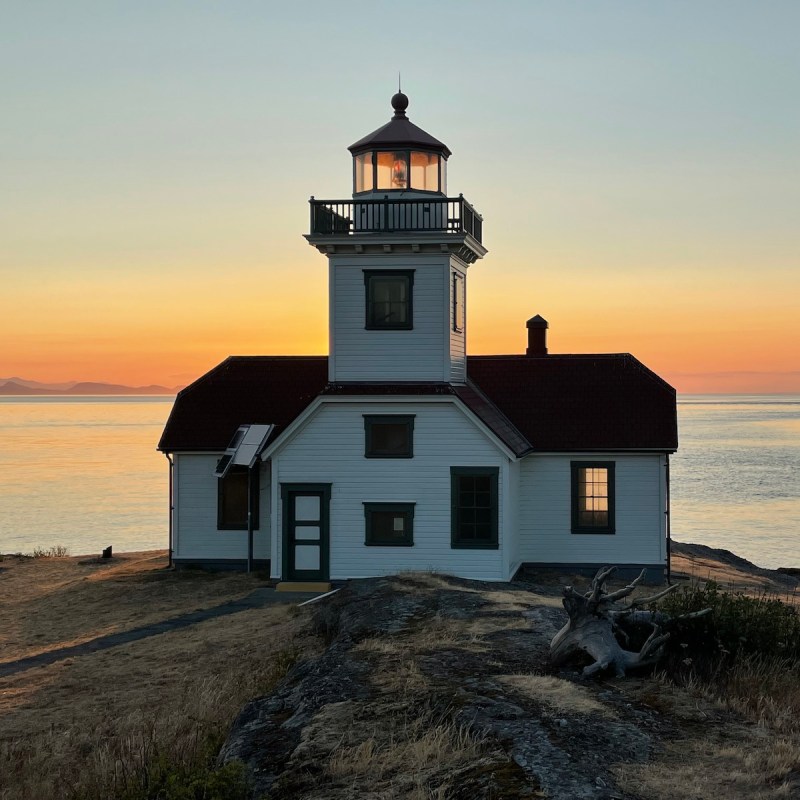
The San Juan Islands may arguably be the most beautiful place on earth. With their rolling fjords and cerulean waters dotting the landscape of the Salish Sea, this ring of 172 islands is situated in the northwest corner of Washington State, not far from the 49th parallel and Canadian border.
Videos by TravelAwaits
Many people, locals and tourists alike, visit the popular destinations of San Juan, Orcas, and Lopez Islands, with the Washington State Ferry system regularly servicing all three.
Maritime and water activities are favorite pastimes on the islands. Quiet, shallow harbors offer a serene and safe place to kayak, deep-water harbors provide perfect mooring or anchoring spots for sailboats and larger cruising yachts, and sandy beaches welcome a sunset walk. Even the famous resident orca pods call these waters home while hunting Chinook salmon along the shorelines. These wild and majestic mammals have become synonymous with these islands and are one of their best assets worth protecting.
Spend any time on the waters of the Salish Sea and you will experience a number of smaller islands in this archipelago. Many of them are enchanting as well as inviting, and usually a little less populated. Three lesser-known islands in the San Juan archipelago are Sucia, Matia, and Patos Islands.
Pro Tip: Unlike the more popular islands, Sucia, Matia, and Patos are only accessible by boat or seaplane with no ferry system running to them. For private charters, board a water taxi from either Anacortes, Washington, or Orcas Island in the San Juans. Try Island Express from Anacortes or Outer Island Excursions leaving Orcas. Another option is to charter your own vessel if you are familiar with boating.

1. Sucia Island
Sucia Island Marine State Park sits 2.5 miles north of Orcas Island. This 814-acre park is popular with both boaters and campers. The island is fairly remote with no real amenities apart from the campgrounds. Hiking this island, however, is truly spectacular, with stunning views of the Strait of Juan de Fuca and occasional encounters with seals, otters, herons, and abundant wildlife.
Sucia is a wonderful destination to slow down and get away from the bustle of life for a while. Perhaps stroll the beaches before snuggling in with a good book, journal, paint, or just sit and gaze at the tranquil waters of Echo Bay — the main and largest inlet on the east side of the island.
Sucia is open all year long with the summer months seeing the most activity, sometimes leading to the campsites and the anchorages being rather full. I suggest visiting in the shoulder months of May and June or September into early October. These months can still see fair weather and generally far fewer people.
Pro Tip: Note that cell phone coverage is spotty on the island and there is a chance you may pick up a Canadian cellular signal. Check your phone for roaming specifications.

Things To Do On Sucia Island
Hiking
If you’re arriving by sailboat or motor cruiser, dinghy over to the shore for some spectacular hiking. Washington State Parks maintains 10 miles of hiking trails on this island. I highly recommend exploring the west side of Sucia; it is a beautiful spot to watch the sunset on the horizon. Many seals enjoy sunbathing on the rocky banks of this side of the island. You can bring your dog hiking as long as it is on a leash.
Kayaking
With many serene bays, Sucia offers kayakers a rather meditative experience. Looking back at shore, the landscape is dotted with beautiful madrone trees and rugged rock formations. A different perspective is to be had from the water’s surface than on land.
Beachcombing
The beaches around these islands are a mix of sand, pebbles, shells, and pieces of driftwood, making for interesting beachcombing finds. The Salish Sea is the traditional homeland of many Indigenous tribes including the Lummi Nation, S’Klallam, and Samish tribes. It is not uncommon to find what is known as a shell midden when out scavenging the shore. A shell midden is where previous Indigenous inhabitants dumped clams and various other shells after using them for cooking. Some middens have covered the beach areas, turning them alabaster white.
Fishing And Crabbing
Pulling into Echo Bay on Sucia to anchor for a night — or two or three — can sometimes feel like an obstacle course dodging your way through the various crab pots set within the bay’s waters. Crabbing and fishing are popular sports for a fresh-from-the-sea catch.
Pro Tip: Be sure you have a Washington State fishing license (get it before you leave) and are up to date on the current catch limits, rules, and if any restrictions apply.

2. Matia Island
Part of the San Juan Islands National Wildlife Refuge, the remote island of Matia is accessible only by boat. Inside this 145-acre marine park is an enchanting wonderland of old-growth forest underneath an evergreen canopy, all overlooking the Strait of Georgia.
The island is unique in that it is owned by the U.S. Fish and Wildlife Service with most of its land closed off to public access. This is in an effort to protect habitats and wildlife. There are 5 acres of shoreline available to boaters as a marine park for anchoring offshore, mooring to a buoy, or tying up at the small, state park dock.
Washington State Parks maintain Matia’s campsites, compostable restrooms, and trails suitable for the whole family; except Fido, since dogs are not permitted on the island.
Things To Do On Matia
Hiking
Exploring the forest and sea by hiking Matia’s 1.2-mile loop trail is the most popular activity. Glimpse into a world of fairytales as you walk under moss-covered branches and thick evergreen canopies filtering sunlight to the forest floor. The sea air fills your senses, becoming your aromatherapy as the trail opens to breathtaking views of the Strait of Georgia before it winds back towards the dock and shoreline where it began.
The magical beauty of this island has enchanted many over the years, including a gentleman named Elvin Smith, otherwise known as the legendary “Hermit of Matia Island.” Smith lived on the island for 3 decades in the early 1900s, building a cabin near the southwest corner. He considered the island very healing and in his words “a constant lovely dream.” Today, there are no inhabitants living on the island.

3. Patos Island
Patos Island is a relatively small island located at the northwesternmost point of the archipelago. Beginning in 1893, its lighthouse has guided ships through a part of the Salish Sea known as Boundary Pass, which is located between Canada and the United States.
The U.S. Bureau of Land Management maintains the island while the Washington State Parks oversees the small campground, trails, and offshore mooring buoys. But it is the U.S. Coast Guard who is the keeper of the lighthouse.
Active Cove is the inlet to slip into as you sail amidst the tranquil waters of Patos. An overnight stay, whether anchored in the cove or pitching a tent at a campsite, affords you a glorious night-sky view for stargazing. The Milky Way appears so close, one might think they could reach out and touch it. But the sky is not the only place to find stars. During the summer, waters around Patos, as well as many other islands in the San Juans, are aglow with bioluminescence. Skim a stick or your hand through the dark water to see it light up with sparkling stars of its own.

The Thing To Do On Patos
Beyond soaking in the rugged beauty of Patos, the main attraction of this island is the Patos Island Lighthouse.
Follow the half-mile trail from the rocky shoreline up through the forest of majestic Pacific madrone trees. You’ll find the lighthouse standing alone and sentinel on the cliff looking out over Boundary Pass as far as the eye can see. You can literally see Canada! This is a perfect spot to watch the sun go down on a perfect day exploring the San Juan Islands.
Pro Tip: Patos Lighthouse has a sister lighthouse located on Stuart Island, also in the San Juans, called the Turn Point Lighthouse.
Explore more of our Pacific Northwest content, including:
